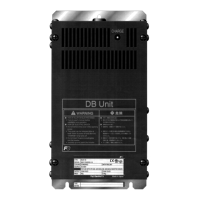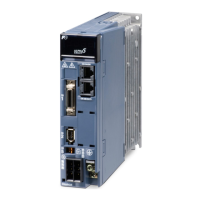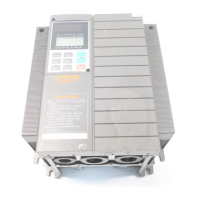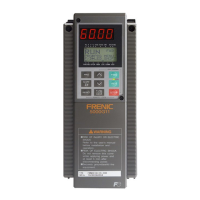2-30
Table 2.10 Continued
Classifi-
cation
Symbol Name Functions
[Y1] Transistor
output 1
(1) Various signals such as inverter running, speed/freq. arrival and overload early
warning can be assigned to any terminals, [Y1] to [Y3] by setting function code E20,
E21 and E22. Refer to Chapter 5, Section 5.2 "Overview of Function Codes" for
details.
(2) Switches the logic value (1/0) for ON/OFF of the terminals between [Y1] to [Y3] and
[CMY]. If the logic value for ON between [Y1] to [Y3] and [CMY] is 1 in the normal
logic system, for example, OFF is 1 in the negative logic system and vice versa.
[Y2] Transistor
output 2
Transistor output circuit specification
Figure 2.25 Transistor Output Circuit
Item
Max.
ON level
3 V
Operation
voltage
OFF level
27 V
Maximum load current
at ON
50 mA
Leakage current at OFF
0.1 mA
Figure 2.26 shows examples of connection between the control circuit and a PLC. [Y3] Transistor
output 3
- When a transistor output drives a control relay, connect a surge-absorbing
diode across relay’s coil terminals.
- When any equipment or device connected to the transistor output needs to be
supplied with DC power, feed the power (+24 VDC: allowable range: +22 to
+27 VDC, 50 mA max.) through the [PLC] terminal. Short-circuit between the
terminals [CMY] and [CM] in this case.
[CMY] Transistor
output
common
Common terminal for transistor output signal terminals
This terminal is electrically isolated from terminals, [CM]s and [11]s.
Connecting Programmable Controller (PLC) to Terminal [Y1], [Y2] or [Y3]
Figure 2.26 shows two examples of circuit connection between the transistor output of the inverter’s
control circuit and a PLC. In example (a), the input circuit of the PLC serves as a sink for the control
circuit output, whereas in example (b), it serves as a source for the output.
(a) PLC serving as Sink (b) PLC serving as Source
Transistor output
Figure 2.26 Connecting PLC to Control Circuit

